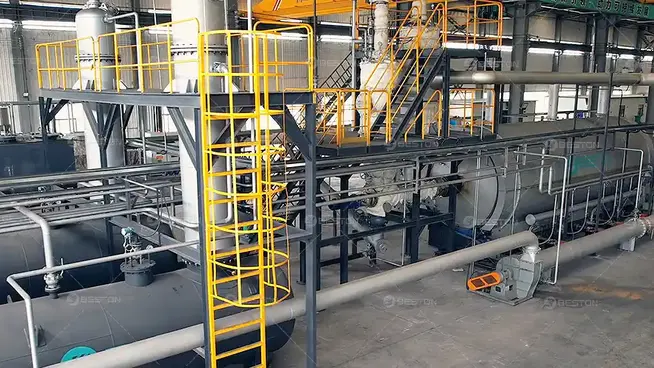

Essential Maintenance Practices for Biochar Machine Operations
Maintaining a biochar machine in optimal condition is critical for achieving consistent production efficiency, product quality, and operational longevity. Unlike conventional equipment, biochar production involves high temperatures, abrasive feedstocks, and continuous thermal cycling, all of which impose unique mechanical and thermal stresses. A structured maintenance regimen not only minimizes downtime but also mitigates safety risks inherent in high-temperature operations.


Ensuring Wood Charcoal Quality Through Controlled Pyrolysis Processe
Wood charcoal quality hinges on a series of thermochemical transformations that occur during pyrolysis. The structural integrity, carbon density, volatile content, and calorific performance of the final product are all shaped by parameters embedded within the thermal decomposition pathway. Within a modern pyrolysis plant, precision control mechanisms make it possible to regulate these parameters and thereby guarantee consistent, high-grade charcoal output. Stable thermal envi


Managing Waxy Residue in Plastic Pyrolysis
In the field of plastic recycling, pyrolysis has emerged as a promising technology for converting plastic waste into valuable products like oils, gases, and solid residues. However, one of the challenges faced by operators of a pyrolysis plant is the formation of waxy residues during the thermal decomposition of plastics. These waxy byproducts, often referred to as "wax," can pose significant issues in both the process and product quality. Effectively managing and mitigating


Enhancing Fertilizer Efficiency through Biochar-Organic Compost Integration
The integration of biochar with organic fertilizer represents a significant advancement in sustainable soil fertility management. By combining the nutrient density of organic compost with the structural and adsorptive properties of biochar produced in a pyrolysis plant , the resulting material provides a synergistic enhancement in nutrient retention, microbial vitality, and carbon stability. This hybrid amendment supports higher fertilizer efficiency and offers long-term ecol


Sulfur Management Strategies in Tyre Pyrolysis
The pyrolysis of end-of-life tyres offers a sustainable route for recovering valuable hydrocarbons, carbon black, and steel, yet it introduces a complex challenge—sulfur control. Tyres typically contain 1–2% sulfur, introduced primarily through vulcanization agents such as zinc oxide and sulfur compounds. During thermal decomposition, these compounds undergo fragmentation, producing sulfur-bearing gases, tars, and solids that, if unmanaged, can cause severe corrosion, catalys


Regional Advantages of BCR Projects in South America
South America has emerged as one of the most promising regions for the deployment of biochar-based carbon removal initiatives. The continent’s vast agricultural landscape, favorable climatic conditions, and growing sustainability commitments form an ideal foundation for scaling biochar carbon removal (BCR) projects. Beyond the environmental benefits, these projects also create new economic opportunities by transforming agricultural residues into carbon-rich materials through


Maximizing Efficiency in Biomass Pyrolysis Operations
The efficiency of biomass pyrolysis is a critical determinant of the economic viability and environmental performance of a pyrolysis plant. Optimizing the thermal conversion of organic feedstock into biochar, bio-oil, and syngas requires a thorough understanding of feedstock characteristics, reactor design, process parameters, and energy management. In high-capacity operations, even marginal improvements in efficiency can translate into significant gains in yield and profitab


The Market for Palm Pyrolysis Projects in Indonesia
Indonesia, as one of the world’s largest producers of palm oil, is uniquely positioned to leverage its agricultural by-products for sustainable energy solutions. Palm pyrolysis, a process that converts palm waste into valuable products such as biochar, bio-oil, and syngas, is increasingly seen as a viable technology to mitigate the environmental impact of palm oil production. This growing interest in pyrolysis of palm waste is part of Indonesia’s broader strategy to address w


Profitability Evaluation of Continuous Tire Pyrolysis Projects
In recent years, the economic and environmental imperatives driving waste tire recycling have shifted significantly. The deployment of...


Revenue Pathways in Biochar Production Projects
Biochar production draws strength from abundant feedstock availability. Agricultural residues, forestry byproducts, and organic waste...



